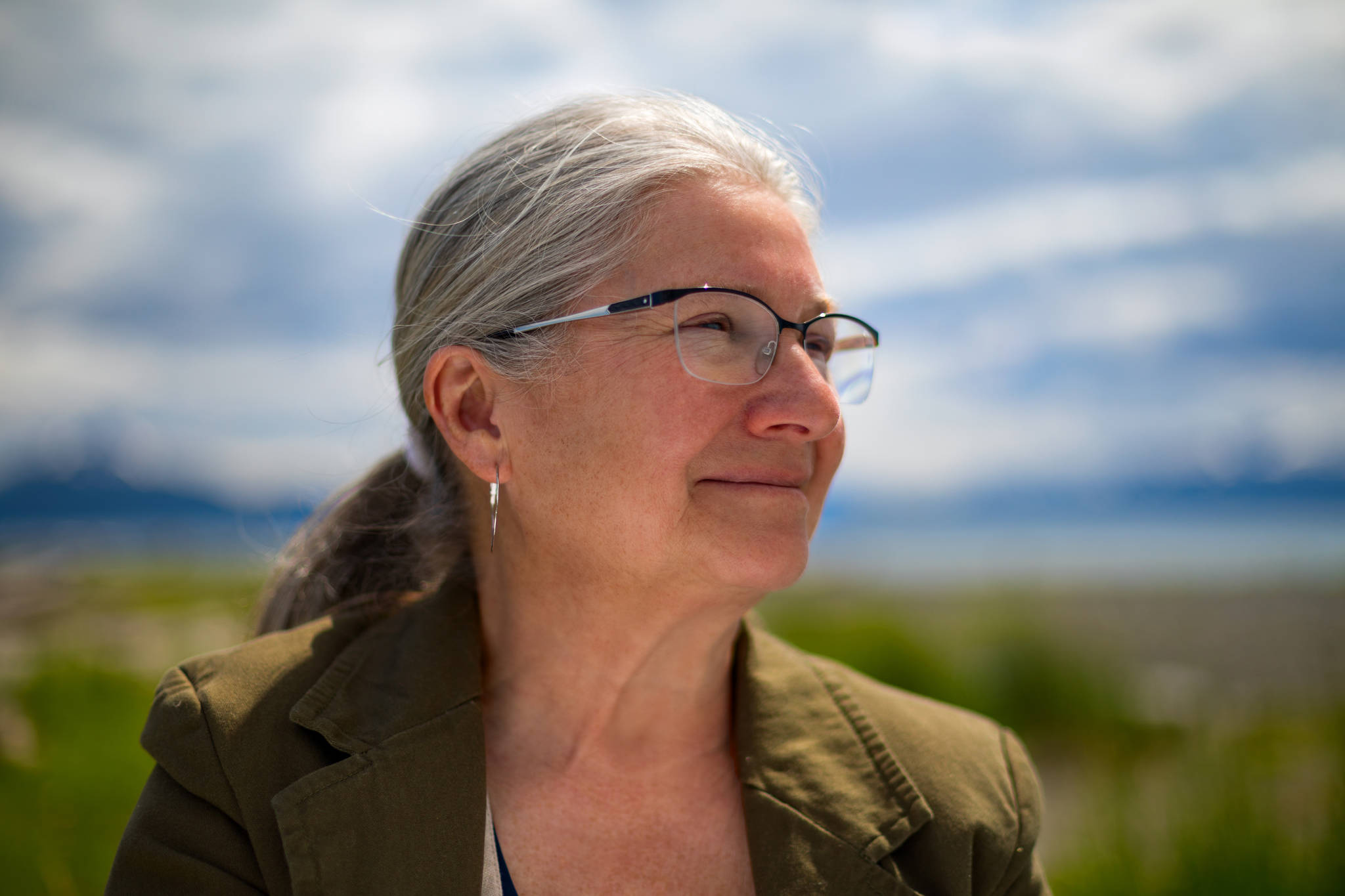When southern Kenai Peninsula residents heard BlueCrest’s plans for the Cosmopolitan project just north of Anchor Point, it brought two new words into our vocabulary: hydraulic fracturing, or, simply, fracking.
We had heard those words used in relation to increased earthquakes. We’d heard about drinking water being poisoned and completely disappearing. We’d heard about battles in the other states and foreign countries to ban fracking because of its dangerous impacts. But that was somewhere else.
Now here it was, at our doorstep. Actually, not just our doorstep, we soon learned. At a meeting of concerned peninsula residents, the Alaska Oil and Gas Conservation Commission said 20 percent of the oil and natural gas wells in Alaska have been hydraulically fracked.
In a nutshell, fracking is a way to crack open shale and rock formations to get at the oil and gas. After being drilled vertically, a well continues horizontally and perforations are created in the horizontal sections using a mixture of water, sand and chemicals under high pressure. The pressure can measure as much at 9,000 pounds a square inch. That’s roughly the same as shoving 1,000 inflated footballs into a one-inch space and popping them simultaneously.
Water can account for as much as 98-99 percent of the fracking fluid recipe. The chemical additives — detergents, salts, acids, alcohols, lubricants, disinfectants — comprise the remaining percent. They prevent micro-organism growth, are oxygen scavengers to prevent corrosion of metal pipes and are acids to reduce drilling mud damage. Two percent sounds insignificant until you realize that each fracture requires millions of gallons of water, so in one million gallons of fluid, that’s 20,000 gallons of additive fluid.
Knowing that did little to calm our fears, but AOGCC assured us Alaska’s fracking procedures were more strict than elsewhere. In other words, we had nothing to worry about.
In an effort to learn more about fracking, I was told by a seismologist that Cook Inlet is riddled with so many faults it is hard to know what is fracking-related and that industry is moving too fast for science to keep pace. Scientific American reported leaks in disposal wells where toxic drilling fluids are injected. A December 2016 report from the Environmental Protection Agency noted “significant gaps and uncertainties of the available data” exist that prevented calculations or estimations of impacts fracking has on drinking water nationally. A recent study by Princeton University indicates fracking may have significant health impacts. Research into the practice of fracking could fill a library and continues to grow.
With so much still unknown about the impacts, Alaskans asked AOGCC to include a public notification and comment period in the fracking permit process. With their knowledge of Cook Inlet and the waters that flow into it, Cook Inletkeeper led the effort, testifying at meetings and bringing the matter to the public’s attention. More than 450 Alaskans spoke up at meetings, testified by phone and wrote letters.
Public notice and the right to comment isn’t much to ask considering oil and natural gas wells on the southern Kenai Peninsula, including BlueCrest’s, are being fracked very near our homes. BlueCrest’s Cosmopolitan wells are little more than 1,000 feet from water wells of nearby neighbors. The wells also extend beneath Cook Inlet.
And it isn’t much to ask when you realize that without notification, we have no idea where fracking is planned. In a conversation with Hilcorp’s landman, I asked if fracking had occurred in any of the wells within the Ninilchik Unit — my cabin is just outside the unit’s southern boundary — and was told no, but Hilcorp had fracked wells in Nikolaevsk. That offered little peace of mind since Hilcorp just bought 42 acres near my cabin. And it was news to Nikolaevsk residents with whom I spoke, just as BlueCrest’s plans were news to those living around the Cosmopolitan project when they learned fracking would be occurring in their neighborhood.
In response to the public’s comments and requests, as well as those from industry representatives and the state saying no public notification was needed, AOGCC has now revised its regulations: fracking applications will be posted on AOGCC’s website. Period. How far in advance of the permit being granted: not noted. Comment period: not included. And, much like when the state leases the subsurface mineral rights to properties whose surfaces are privately owned, it is the property owners’ responsibility to find out for themselves if and what development is planned.
Jody Colombie, special assistant to AOGCC, told me earlier this month the fracking regulation change has been sent to the Attorney General for review and then will be forwarded to the Lieutenant Governor for signature, a process she estimated will take 6-8 weeks. When I asked if we could submit comments to the Lieutenant Governor, Colombie said, “You could if you want to, but we’ve adopted it.”
Maybe Colombie is right. Maybe it won’t help, but there is too little science and too much at risk to stay quiet. Please join me in asking Lt. Governor Byron Mallott to not sign this procedural change until it ensures adequate public notice and requires public comments to be considered before any permits to frack are awarded.
Janna Lindemuth, Attorney General, 1031 W. Fourth Ave., Suite 200, Anchorage, AK 99501; jahna.lindemuth@alaska.gov
Byron Mallott, Lt. Governor, P.O. Box 110001, Juneau, AK 99811; byron.mallott@alaska.gov
McKibben Jackinsky is a Kenai Peninsula resident, a former reporter for the Homer News (now retired), and the author of “Too Close to Home? Living with ‘drill, baby’ on Alaska’s Kenai Peninsula,” published in 2016 by Hardscratch Press.


